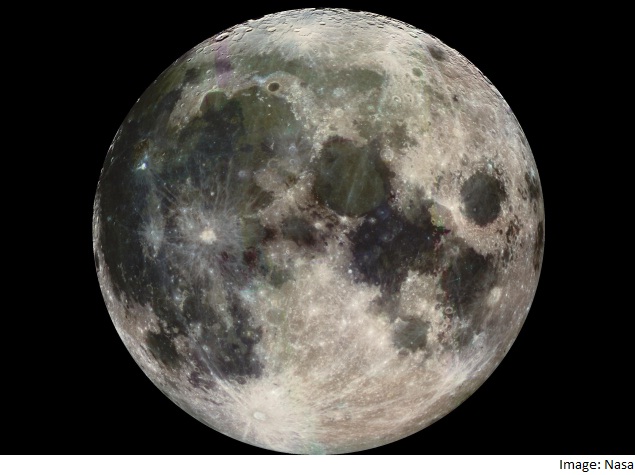- Home
- Science
- Science News
- New Technique Can Reveal Age of Moon Rocks
New Technique Can Reveal Age of Moon Rocks

Many of the techniques used to date rocks on Earth are not practical in spaceflight, but a technique called laser ablation resonance ionisation mass spectrometry can avoid the need for sophisticated sample preparation. A team led by Dr F Scott Anderson from Southwest Research Institute, Boulder, Colorado, US, has now demonstrated that this technique can successfully date an Earth rock - the Duluth Gabbro - that is analogous to the rocks that cover one-third of the lunar nearside.
Their results imply that events from Solar System history that are recorded on much of the visible face of the Moon can one day be dated directly by instruments aboard a lunar lander. "We can see cratered terrains on the Moon whose ages we don't know within a billion years," said Anderson. "Ages of lunar terrains are the linchpin for understanding the sequence of planetary-scale events from Mercury to Mars, so filling this gap in our understanding of the Moon will help us correct or re-write the history of volcanism, planetary evolution, water, and life in the Solar System," said Anderson.
Dating the Duluth Gabbro was approximately 30 times more analytically challenging than our previous experiment, dating the Martian meteorite Zagami, noted co-author Dr Jonathan Levine from the Department of Physics and Astronomy, Colgate University, Hamilton, New York.
"We are now continuing to analyse planetary samples of increasing complexity," he said. The research was published in the journal Rapid Communications in Mass Spectrometry.
Get your daily dose of tech news, reviews, and insights, in under 80 characters on Gadgets 360 Turbo. Connect with fellow tech lovers on our Forum. Follow us on X, Facebook, WhatsApp, Threads and Google News for instant updates. Catch all the action on our YouTube channel.
Related Stories
- Samsung Galaxy Unpacked 2025
- ChatGPT
- Redmi Note 14 Pro+
- iPhone 16
- Apple Vision Pro
- Oneplus 12
- OnePlus Nord CE 3 Lite 5G
- iPhone 13
- Xiaomi 14 Pro
- Oppo Find N3
- Tecno Spark Go (2023)
- Realme V30
- Best Phones Under 25000
- Samsung Galaxy S24 Series
- Cryptocurrency
- iQoo 12
- Samsung Galaxy S24 Ultra
- Giottus
- Samsung Galaxy Z Flip 5
- Apple 'Scary Fast'
- Housefull 5
- GoPro Hero 12 Black Review
- Invincible Season 2
- JioGlass
- HD Ready TV
- Laptop Under 50000
- Smartwatch Under 10000
- Latest Mobile Phones
- Compare Phones
- Redmi Note 15 5G
- Redmi Note 15 Pro 5G
- Redmi Note 15 Pro+ 5G
- Lava Play Max
- Poco C85 5G
- Honor Magic 8 Lite
- Jolla Phone
- Realme P4x 5G
- Asus ProArt P16
- MacBook Pro 14-inch (M5, 2025)
- OnePlus Pad Go 2
- Poco Pad M1
- Just Corseca Skywatch Pro
- Honor Watch X5
- Acerpure Nitro Z Series 100-inch QLED TV
- Samsung 43 Inch LED Ultra HD (4K) Smart TV (UA43UE81AFULXL)
- Asus ROG Ally
- Nintendo Switch Lite
- Haier 1.6 Ton 5 Star Inverter Split AC (HSU19G-MZAID5BN-INV)
- Haier 1.6 Ton 5 Star Inverter Split AC (HSU19G-MZAIM5BN-INV)

















